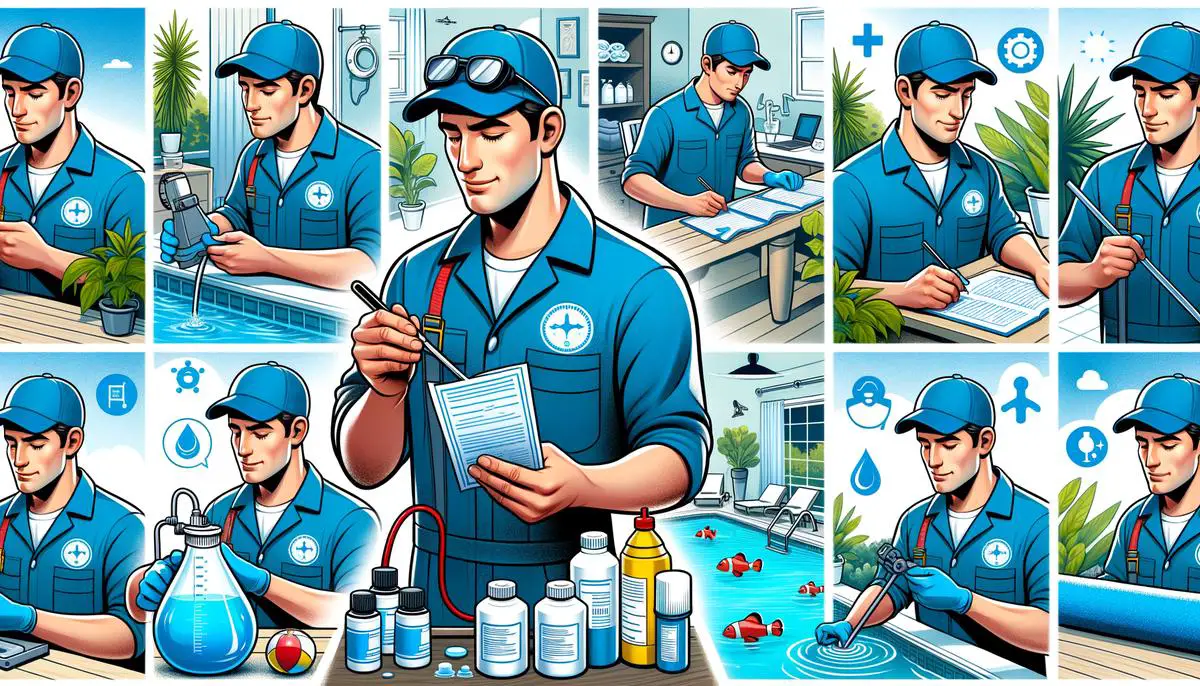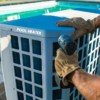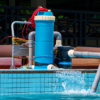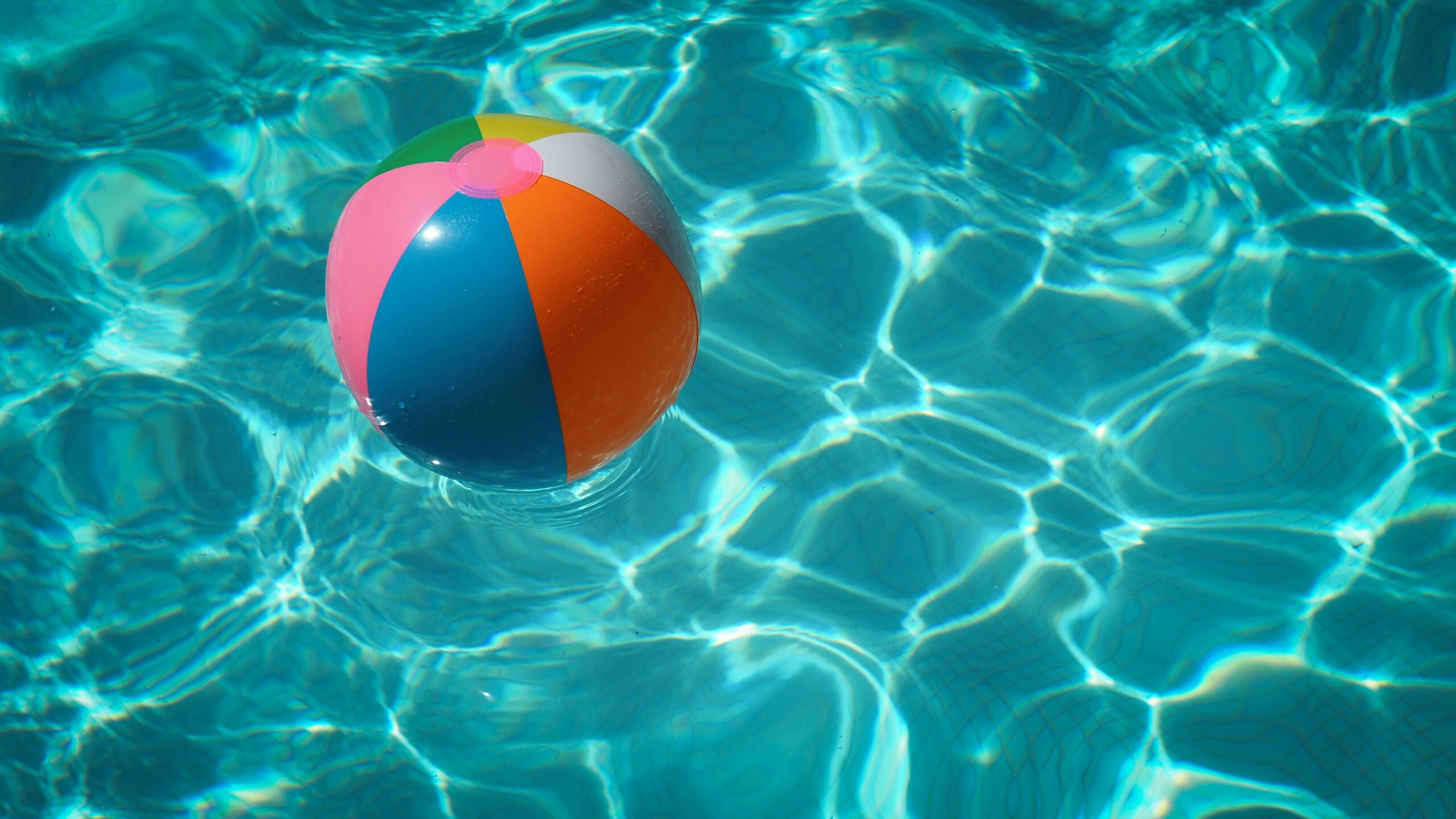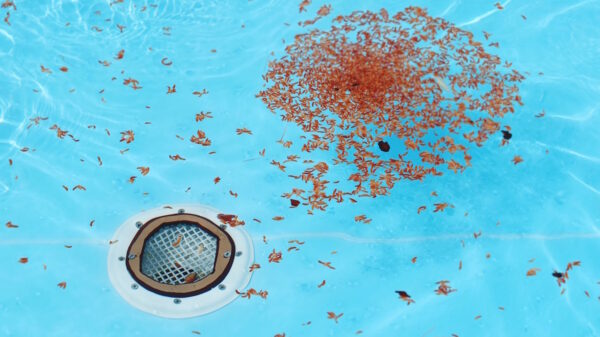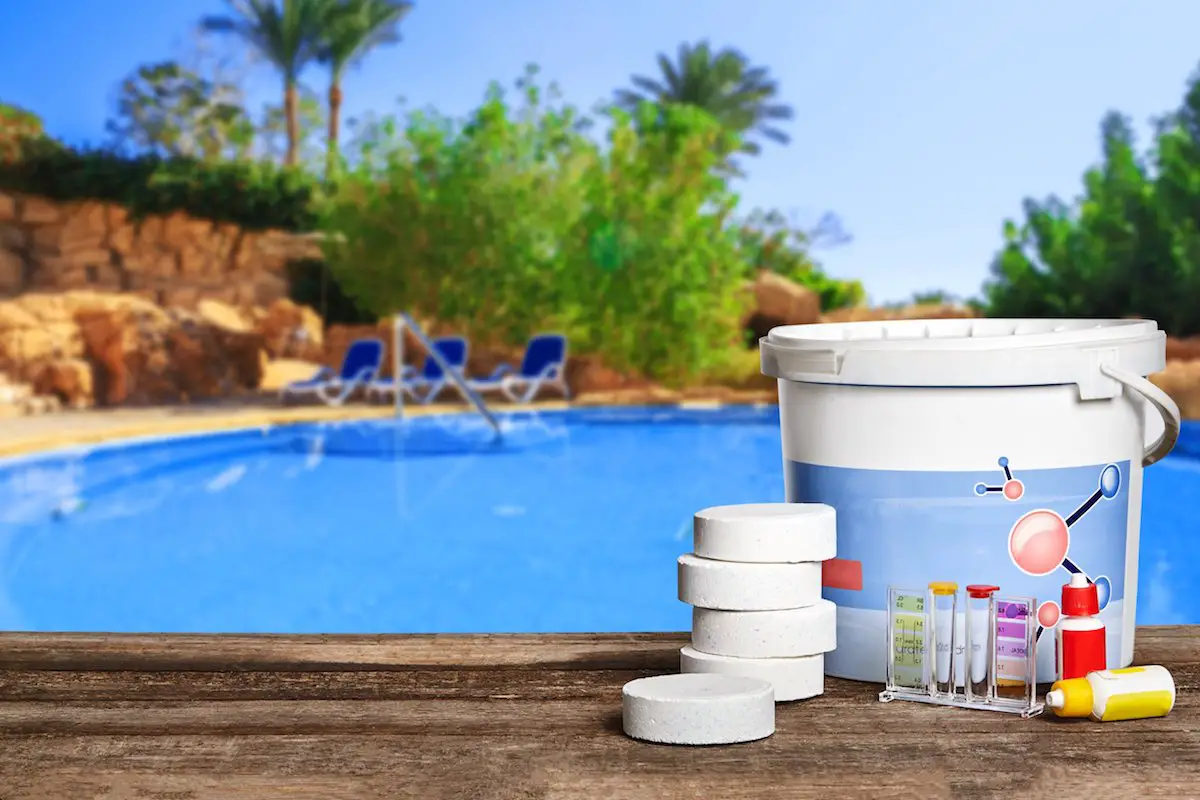Welcome to your guide on getting your pool ready for the sunny days ahead. With clear steps and helpful tips, we’ll walk through how to clean, inspect, and maintain your pool to ensure it’s safe, enjoyable, and sparkling clean for everyone. Whether you’re a seasoned pool owner or new to pool maintenance, this guide will provide you with the necessary information to keep your pool in top condition throughout the swimming season. Let’s take a look at how you can make spring pool prep easy.
Cleaning and Inspection
Spring Pool Cleaning and Inspection Guide
Welcome to your spring pool cleaning and inspection tutorial! With the warmer weather approaching, it’s crucial to get your pool ready for those sunny days ahead. Let’s dive into how to thoroughly clean and inspect your pool, ensuring it’s safe and sparkling for everyone to enjoy.
Step-by-Step Pool Cleaning
- Remove Debris: Start by skimming the surface to remove leaves and other floating debris. Don’t forget to empty the skimmer baskets, too. This simple step makes a big difference in the appearance of your pool and the efficiency of the filtration system.
- Brush the Walls and Floor: Grab a pool brush and scrub down the walls and floor. Tackling buildup and algae early helps keep the water clear. Pay special attention to areas with little water circulation, like corners and stairs.
- Vacuum the Pool: Once brushing is complete, vacuum your pool thoroughly. This removes the debris you’ve loosened by brushing, ensuring it doesn’t just settle back down.
- Clean or Replace Filters: Check your pool’s filter system. If you have a cartridge filter, it might need cleaning or replacing. For sand or diatomaceous earth (DE) filters, backwash as necessary. This step is vital for maintaining optimal water clarity and cleanliness.
- Check and Balance Water Chemistry: Using a water testing kit, check your pool’s pH, chlorine, alkalinity, and other chemical levels. Adjust as needed according to your pool manufacturer’s guidelines. Proper water chemistry prevents algae growth and ensures the water is safe for swimming.
- Inspect for Repairs: Look for signs of wear and tear. Check the pool liner for rips, the decking for cracks, and the pumps and hoses for leaks. Early detection of these problems can save you from more costly repairs down the line.
Spring Inspection Guide
- Safety Features: Make sure all safety features, including pool fences, gates, and ladders, are secure and functioning properly. Safety should always be a top priority.
- Lighting and Electrical Systems: Inspect all pool lights and electrical outlets for damage. Any issues with electrical systems should be handled by a professional to ensure safety.
- Pump and Filtration System: Listen to the pool pump for unusual noises, indicating it might need servicing. Confirm that the filtration system is operating smoothly without any leaks.
- Additional Equipment: If you have pool heaters, cleaners, or other additional equipment, check these for proper operation. Make sure automatic pool cleaners are debris-free and moving correctly.
By following these detailed steps for cleaning and performing a thorough inspection, your pool will not only look inviting but will also provide a safe and enjoyable environment for the entire family. Remember, consistent maintenance is key to a hassle-free pool season. Happy swimming!
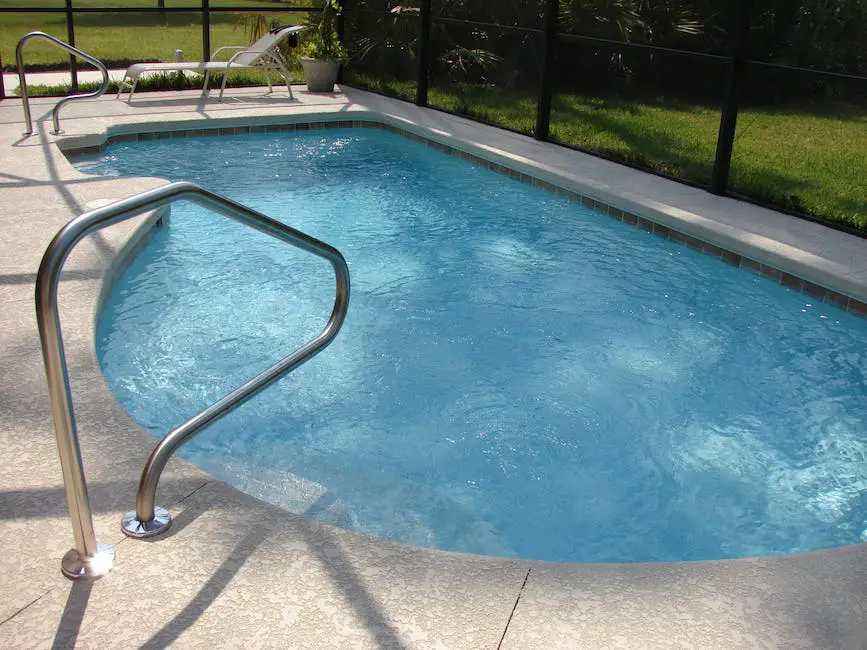
Water Quality Management
Maintaining Your Pool’s Water Quality: Beyond the Basics
Having covered the foundational steps for keeping your pool clean and safe, let’s dive deeper into ensuring your pool’s water quality remains top-notch. Crystal clear, healthy pool water isn’t just about removing visible debris and making sure everything is in working order. There are a few more critical steps you need to take to ensure your pool is always ready for a refreshing dive.
Maintain Consistent Chlorine Levels
Chlorine is the superhero of pool maintenance, keeping the water free from bacteria and algae. However, too much chlorine can irritate your skin and eyes, and too little can leave your pool vulnerable to unwanted guests. Use a chlorine testing kit weekly to check the levels. Aim to maintain chlorine levels between 1-3 ppm (parts per million) for optimal water quality. If the levels are off, adjust them by adding chlorine or a chlorine reducer according to the product instructions.
Balance pH Levels
The pH level of your pool water influences how effective your chlorine is. It also affects how comfortable the water feels when you dive in. Test your water’s pH levels regularly, striving for a range between 7.2 and 7.6. If the pH is too high or too low, it can lead to issues like corrosion or scaling on pool equipment and surfaces, not to mention it can irritate your skin and eyes. Adjust pH levels by adding either a pH increaser or decreaser, following the directions on the product label carefully.
Shock Your Pool Regularly
Shocking your pool means adding a large dose of chlorine to the water to break down chloramines (chlorine combined with ammonia) and other contaminants. This process keeps the water clear and prevents it from turning green or cloudy. It’s an essential step, especially after heavy use, a rainstorm, or a noticeable decrease in water quality. Follow the instructions on the shock product, typically doing this every week or two, depending on your pool’s usage and the weather conditions.
Prevent Algae Growth
Algae can quickly turn your pool from a clear oasis into a murky pond. Preventing algae growth is easier than dealing with an infestation. Along with maintaining chlorine and pH levels, consider using an algaecide weekly. These products can prevent algae from taking hold, ensuring your pool stays clear and inviting.
Manage Calcium Hardness
Water that’s too soft can corrode pool equipment and surfaces, while water that’s too hard can lead to scale buildup. The calcium hardness of your pool should ideally be between 200-400 ppm. Test the water monthly, adjusting as necessary with a calcium hardness increaser or reducer. Keeping the calcium hardness balanced protects your pool and ensures the water remains pleasant for swimming.
Keeping your pool’s water quality in check is crucial for ensuring the longevity of your pool and the safety and enjoyment of its users. Remember, regular maintenance is key. By following these additional steps and staying proactive in your pool care routine, you’ll enjoy crystal clear water all season long.

Equipment Check and Maintenance
Keeping Your Pool in Top Shape: Equipment Checks and Essential Maintenance
Diving into pool maintenance can be as refreshing as a morning swim when you know what you’re doing. Beyond the routine cleaning and chemical balancing, ensuring your pool’s equipment is performing optimally is key to a crystal-clear oasis. Let’s jump into the essentials of equipment checks and routine maintenance to keep your pool inviting all season long.
Lubricate O-Rings and Seals: Like the joints in your body, O-rings and seals in your pool’s equipment need regular lubrication to stay flexible and prevent leaks. Use a silicone-based lubricant on pump lids, filter O-rings, and valves every few months, especially before opening your pool for the season.
Monitor Water Level: The water level in your pool can affect the efficiency of your skimmer and pump. Ensure the water level stays halfway up the opening of the skimmer. Too low and your pump may suck in air; too high and the skimmer won’t collect debris effectively. Adjust the water level by adding a hose or opening the waste line to lower it after heavy rain.
Check for Leaks: Regularly inspect around your pump, filter, heater, and plumbing lines for signs of leaks. Damp spots, puddles, or erosion near equipment platforms can indicate a leak. Small leaks can turn into big problems if not addressed, leading to higher water bills and potential equipment failure.
Inspect and Clean the Salt Chlorine Generator Cell: If your pool uses a salt chlorine generator, the cell will need periodic cleaning to remove calcium buildup and ensure efficient chlorine production. Consult your manufacturer’s instructions for the recommended cleaning method, which typically involves soaking the cell in a mild acid solution.
Test and Calibrate the Auto Chlorinator: For pools with automatic chlorine dispensers, it’s important to calibrate them to dispense the correct amount of chlorine based on your pool’s size and usage. Test the chlorine levels regularly and adjust the feeder settings as needed to maintain proper sanitization.
Evaluate the Pool Heater: Perform a visual inspection of your pool heater for signs of rust, corrosion, or soot. If equipped, ensure the ventilation and exhaust areas are unobstructed. It’s wise to have a professional service your heater annually, particularly if it’s gas or propane-fired, to ensure safe and efficient operation.
Keep an Eye on the Pressure Gauge: The pressure gauge on your filter offers insight into when backwashing or cleaning is needed. A significant rise above the normal operating pressure (usually 10-15 psi over) signals it’s time to clean. Conversely, a significant drop could indicate a blockage or an issue with the pump.
Refresh with Backwashing: For sand and DE (diatomaceous earth) filters, backwashing reverses the water flow to clean out trapped debris in the filter media. Perform backwashing as indicated by your pressure gauge or based on manufacturer recommendations. Remember to replenish DE powder after backwashing DE filters.
By incorporating these equipment checks and maintenance routines, you’ll extend the life of your pool equipment and enjoy a cleaner, safer swimming environment. Dive into this proactive approach to pool care, and float through the summer with ease.
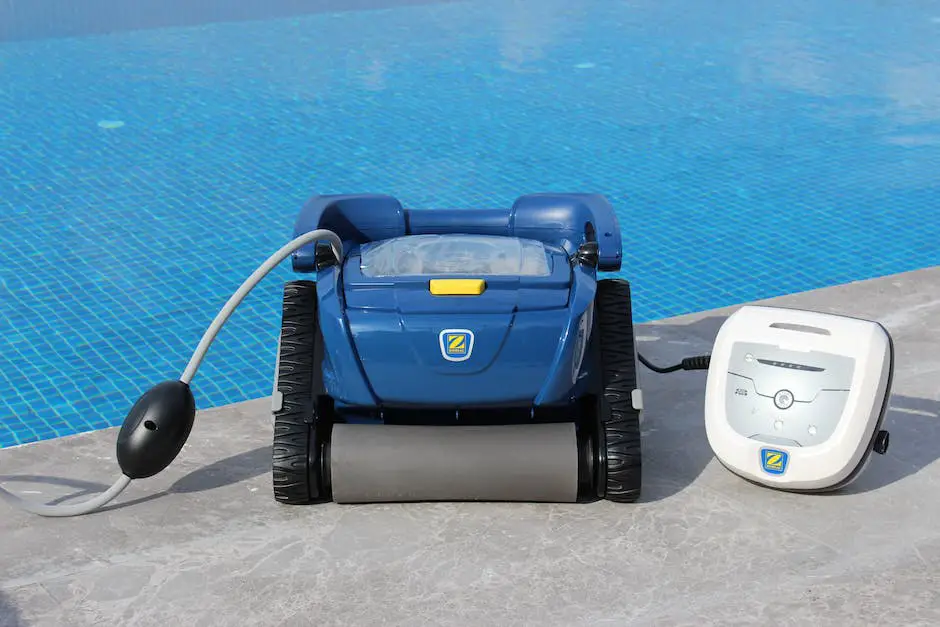
By following the detailed steps outlined for cleaning, inspecting, and maintaining your pool, you’ll set the stage for a season filled with fun and relaxation. Regular maintenance goes a long way in preventing common pool issues and ensures your pool remains a clean, safe, and attractive centerpiece of your summer activities. Here’s to a summer of clear skies and even clearer pool water, where every swim is a refreshing experience. Take pride in your proactive efforts; your pool is ready to make a splash.

